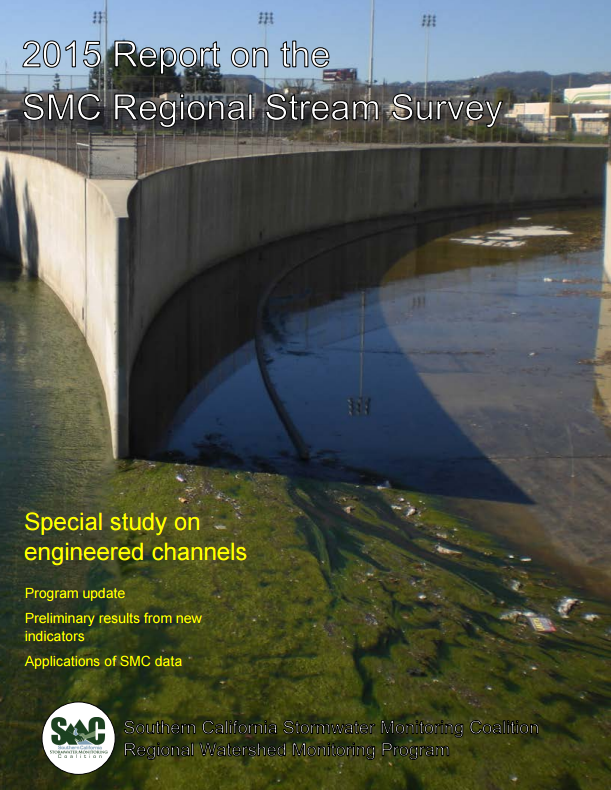SMC completes analysis of bioassessment scores for engineered channels

The Southern California Stormwater Monitoring Coalition has completed a comprehensive analysis of the range of ecological condition scores obtained when engineered channels across coastal Southern California are scored using existing stream bioassessment tools.
The study, co-authored by SCCWRP and published in the SMC’s 2015 annual report, found that condition assessments based on multiple bioindicators are far more useful in engineered channels than assessments based on one indicator alone.
Specifically, using a benthic macroinvertebrate-based scoring tool and algae-based scoring tools together provided a more complete picture of stream health. The algae-based scoring tools, for example, generated a wider range of bioassessment scores than the benthic macroinvertebrate-based scoring tool, which typically generated bioassessment scores well below the threshold for healthy streams.
The SMC also shed light on why some engineered channels score better than others – insights that could help stream managers understand how best to direct resources to improve channel health. The study showed that bioassessment scores are influenced by habitat factors, including microhabitat diversity and shading, as well as by water quality, including specific conductivity and temperature.
The SMC study was conducted as California moves toward developing a biointegrity policy governing the condition of streams statewide. The SMC is evaluating the biological condition of engineered channels across California’s South Coast region to understand how stream managers could be affected by this upcoming policy.
Engineered channels, which are streams that have been modified through installation of manmade features such as concrete lining, tend to score more poorly with bioassessment tools than their non-engineered counterparts, and might not be able to support the same biological communities. Engineered channels make up an estimated 40% of all stream-miles in the region.
The findings of the SMC study will inform ongoing discussions between regulators and permittees about appropriate biological objectives for engineered channels.
For more information, contact Dr. Raphael Mazor.
More news related to: Bioassessment, Indices of Biotic Integrity, Regional Monitoring, Southern California Stormwater Monitoring Coalition, Top News